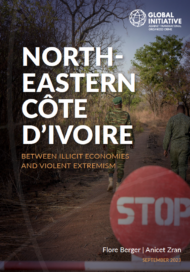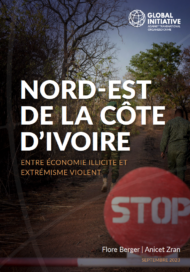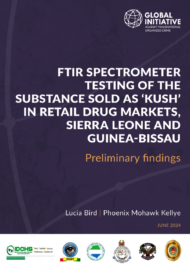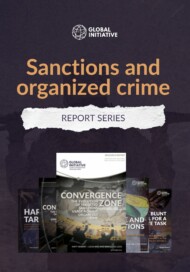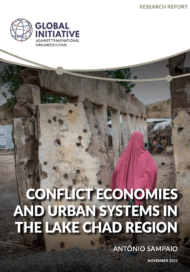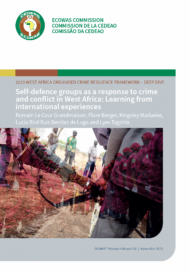A wave of attacks hit the Bounkani region in north-eastern Côte d’Ivoire in June 2020, illustrating the presence of violent extremist groups as far north as the coastal states of West Africa, far from their bastions of influence in the central Sahel.
Since then, the population has been threatened and intimidated, entire villages taken hostage, improvised explosive devices (IEDs) planted and attacks mounted on defence and security force positions.
At the same time, an increase in criminal activities such as hold-ups, cattle rustling and kidnappings has also been reported. Although several sources attribute the amplification of these three illicit economies to violent extremist groups, and sometimes rightly so, the analysis needs to be nuanced because many dynamics are at work, in parallel, which depend on a number of factors. The north of Côte d’Ivoire has long been a major trafficking zone because of its porous borders with Burkina Faso and Mali, while illicit markets proliferated during the armed rebellion that split the country in two (north and south) between 2002 and 2011. The dynamics of conflict and crime therefore need to be analyzed in this post-conflict context, as the legacy of the rebellion in the north of the country is still being felt today.
Since 2020, the threat of violent extremism has spread to the Bounkani region (Téhini, Tougbo, Bolé, Togolokaye, Kolobougou, Gôgô, Zèpou, etc.) and the Tchologo region (Kafolo), both of which border Mali and Burkina Faso. Although pressure from violent extremist groups has decreased in 2022, with fewer attacks and criminal activities recorded, this does not mean that the vulnerabilities and risks faced by north-eastern Côte d’Ivoire have disappeared. Comoé National Park, a protected area straddling the two regions, appears to be particularly vulnerable to both extremism and criminality. According to local communities, the park harbours fighters and criminal groups who take advantage of its 11 500 square kilometres of forest to carry out incursions, withdraw after attacks, hide, organize and stockpile equipment, as well as exploit subsoil resources, particularly gold.
Subscribe to the WEA-Obs dedicated mailing list
Nord-Est De la Côte D’Ivoire: Entre économie illicite et extrémisme violent
Une vague d’attaques en juin 2020 a frappé la région du Bounkani dans le nord-est de la Côte d’Ivoire, illustrant la présence des groupes extrémistes violents jusque dans le nord des États côtiers d’Afrique de l’Ouest, loin de leurs bastions d’influence du Sahel central.
Depuis, de nombreuses menaces et intimidations contre la population, des prises en otage de villages entiers, ainsi que des poses d’engins explosifs improvisés et des attaques contre des positions des forces de défense et de sécurité ont eu lieu.
En parallèle, une augmentation des activités criminelles telles que les braquages, les vols de bétail et les enlèvements, a également été rapportée. Bien que plusieurs sources attribuent l’amplification de ces trois économies illicites aux groupes extrémistes violents, et parfois à raison, l’analyse doit être nuancée car de nombreuses dynamiques sont à l’œuvre en parallèle et dépendent de plusieurs facteurs. Le nord de la Côte d’Ivoire est depuis bien longtemps une zone importante de trafic en raison de sa frontière poreuse avec le Burkina Faso et le Mali, et les marchés illicites se sont fortement développés durant la rébellion armée qui a divisé le pays en deux (nord et sud) entre 2002 et 2011. Il faut donc analyser les dynamiques de conflit et de criminalité dans ce contexte post-conflit, car aujourd’hui encore, l’héritage de la rébellion dans le nord du pays se fait sentir.
Depuis 2020, la menace de l’extrémisme violent s’est répandue à la région du Bounkani (Téhini, Tougbo, Bolé, Togolokaye, Kolobougou, Gôgô, Zèpou, etc.) et à la région du Tchologo (Kafolo), deux régions frontalières avec le Mali et le Burkina Faso. Bien que la pression exercée par les groupes extrémistes violents ait diminué en 2022, avec moins d’attaques et d’activités criminelles enregistrées, cette diminution ne veut pas dire que les vulnérabilités et les risques auxquels fait face le nord-est de la Côte d’Ivoire ont disparu. En particulier, le parc national de la Comoé, un espace protégé à cheval sur les deux régions, semble particulièrement vulnérable à ces deux phénomènes. Aux dires des communautés locales, le parc est en effet considéré comme une zone qui a et peut abriter des combattants et des groupes criminels, qui profiteraient de cette zone forestière de 11 500 km² pour mener des incursions, se replier après les attaques, se cacher, s’organiser et stocker du matériel, mais également exploiter les ressources du sous-sol, et notamment l’or.
Subscribe to the WEA-Obs dedicated mailing list
